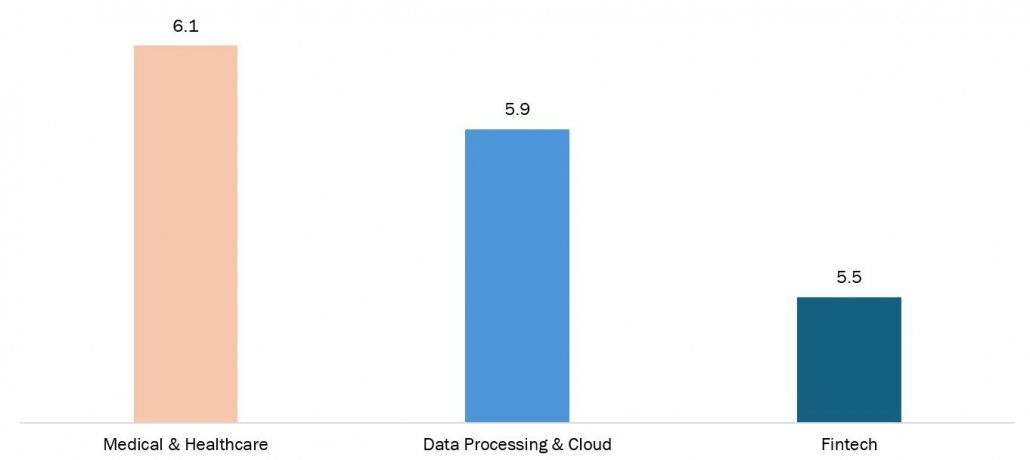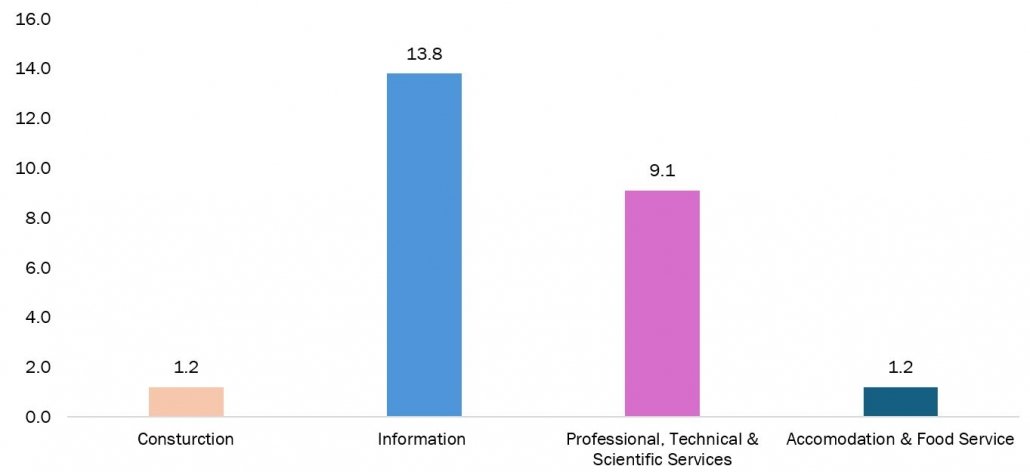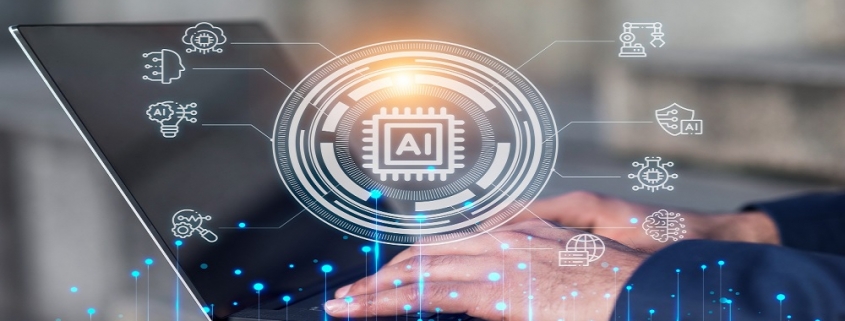The Top 5 AI Trends to Look Out for in 2024
Artificial Intelligence has created an atmosphere that bolsters creativity and promotes efforts to adopt next-generation technological innovations whose applicability is slowly gaining traction. Such a creative solution is slowly navigating the functional activities ranging from industrial to normal day-to-day. Join us as we explore the “Top 5 AI Emerging Trends in 2024 ” in this article that have changed industries and provided many advantages.
Top 5 AI Trends
- Generative AI (Next Generation)
- Augmented Working
- AI Legislation
- Multimodal AI
- Agentic AI
Let’s discuss each one in detail.
1. Generative AI
The Generative AI concept goes way back to the 1950s when researchers introduced machine learning, but as time & technology picked up pace new trends in AI technology such as text-to-image conversion, text-to-video conversion, language processing started to emerge and with the launch of “ChatGPT” in 2022, this trend was given major boom. In various industrial sectors be it media & entertainment, BFSI, healthcare, or manufacturing, the emphasis on exercising innovations to improve productivity coupled with the “Industry 4.0” initiative undertaken by countries resulted in positive investments.
Furthermore, new updates and launches of generative AI by major tech giants are expected to increase the prevalence of generative AI adoption. For instance, in November 2023, Tata Consultancy in collaboration with Amazon Web Service launched a generative AI practice that enables sectors to optimize AWS generative AI services to generate higher business outcomes.
Likewise, in September 2023, CM.com launched its generative AI engine which is based on LLM (Large Language Models) and provides various in-depth business-specific knowledge sources to its business customers. The recent launch showcased CM.com’s ongoing investment efforts in conversational AI.
The growing emphasis on promoting augmented & virtual reality has expanded the market scope, as generative AI through GAN (Generative Adversarial Network) can create realistic and high textures, images, and objects in AR & VR environments. The latest technological breakthroughs such as “Apple Vision Pro” which blends digital content with physical environment through AI are expected to bridge the gap between generative AI and virtual reality.
2. Augmented Working
The applicability of Artificial intelligence (AI) in industrial sectors has paved the way to excel in day-to-day functioning as AI algorithms allow to replicate and perform tasks that human personnel are required to do. When combined with IoT devices AI creates a framework that provides massive amounts of data collected from connected devices that can be used to assess the loopholes and errors. According to Stanford University’s “AI Index 2023” report, in 2022, major AI-related investments were made in medical & healthcare (US$6.1 billion), followed by data processing & cloud (US$5.9 billion) and fintech (US$5.5 billion).
Figure 1. A: Areas With the Most AI-Related Investment, in US$ Billion, in 2022

Source: Standford University “AI-Index 2023”
The booming emphasis on industrial automation especially in major economies has provided new growth opportunities. Countries such as China and the United States have shown rapid expansion in AI and machine learning technologies adoption for industrial & commercial operations. For instance, according to the US Census “Business Trends and Outlook Survey” from October to November 2023, AI 3.9% of businesses in the country used Artificial Intelligence for producing goods & services. The same source stated that the national average of AI adoption in sectors is expected to reach up to 6.5% in the future.
Figure 1. B: Percentage Share of AI Adoption by Selected Sectors in USA, From October -November 2023

Source: US Census (BTOS)
Favorable investments and government initiatives to bolster AI adoption are in line. The US National Science Foundation, in October 2023, announced investments of US$10.9 million in the development of protected artificial intelligence technologies. Moreover, China’s Ministry of Science and Technology announced the launch of “Artificial Intelligence For Science” in March 2023 to bolster AI adoption in key science & technological areas such as drug development, biology breeding, and gene research.
3. AI Legislation
AI trajectory is not solely precedented for tech enthusiasts, its growing potential is also grabbing the attention of policymakers. Major nations namely the United States, China, and the European Union are initiating efforts and AI bills & policies. For instance, the “Artificial Intelligence ACT” proposed by the European Union provides a legal framework for adopting Artificial Intelligence in the EU. More stringent amendments were proposed in June 2023. Moreover, the Biden Administration in May 2023, proposed new actions to promote responsible AI innovations to safeguard the rights & safety of Americans. The expanding AI footprint in the ethical dilemma myriad spanning from financial council to health evaluation has made it imperative to establish norms that promote fairness and transparency.
4. Multimodal AI
Unlike traditional AI that relies on single mode-data processing, the multimodal encompasses multiple input types inclusive of sound, text, and images to mimic the human ability and process diverse sensory information. The multi-modal AI though is in the infancy phase, however, various favorable investments and efforts to unlock the potential of innovative AI have fuelled the growing trend.
For instance, in December 2023, Google launched its “Gemini” its multimodal AI which can operate across different information models inclusive of video, audio, code, and image. The AI modal can run varied devices ranging from data centers to mobile devices and comes in three variants “Gemini Ultra”, “Gemini Pro”, and “Gemini Nano”.
Likewise, in March 2023, OpenAI introduced its multimodal AI “GPT-4” which exhibits various human-level performances both at academic and professional levels. The latest breakthrough of OpenAI unlike its predecessor Chat-3.5 can handle more nuanced instructions.
The growing investments in natural language processing by enterprises is acting as an aditioanl driver to enhance the development & adoption of multimodal AI as it fosters more contextual and engaging conversations. For instance, according to the “2023 Expert NLP Survey Report” by expert.ai, in 2023, of the 150 organization survey acorss USA and Europe, 77% expectes to spend more on NLP in coming 12-18 monts, while 71% used natural language processing that supports multiple text analytics.
Multimodal AI holds diverse applicability as in healthcare it can be used for analyzing a patient’s history, and his/her genetic information to improve the overall diagnostic. Likewise, corporate & job level multimodal AI through its coding capabilities can provide new data by carefully assessing new benchmarks and simulations.
5. Agentic AI
This advanced system showcased a shift from reactive to proactive AI as it exhibited the ability, proactivity, and autonomy to act independently. Unlike the traditional AI system that follows predetermined programming, agentic AI holds an adaptive nature where it analyses the environment, sets goals, and acts in accordance to achieve those set objectives.
Such a system can be applied in applications such as during environment monitoring where the AI agent can be trained to collect and analyze the data pattern thereby initiating preventive actions. Favorable investments to cater to AI adoption in environment monitoring are expected to propel the overall AI trend. For instance, in March 2023, Impact Observatory raised investments of US$5.9 million which the company would use in accelerating the development of its AI-powered environment monitoring products, both for commercial and government customers.
Major collaborations such as the “AI Alliance” formed by IBM and Meta in December 2023, along with 50 other global companies aim to accelerate responsible innovative AI development that caters to a diverse range. Such collaboration is fostering the development of Agentic AI. With the advent of growing natural disasters, the probability of usage of advanced warning systems in geolocation-based environment monitoring is anticipated to rise which will provide new growth opportunities for Agentic AI.



